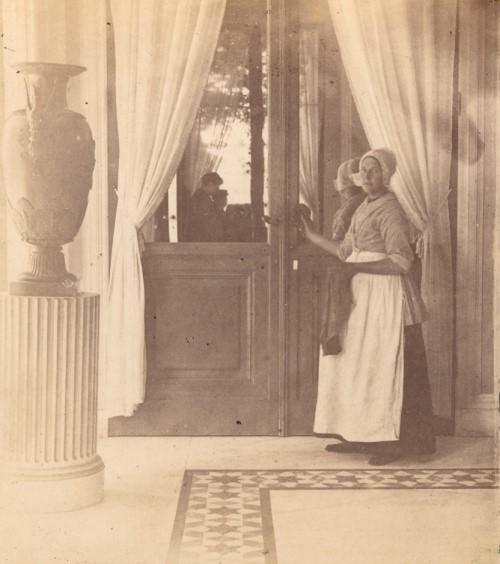Life in a country house
Do you ever dream of a second home where you can retire every now and then? For many of us, unfortunately, this is out of the question, but in Prince Frederick's time, it was perfectly normal for wealthy people to own several houses. Houses in the countryside, known as "buitenplaatsen," were an ideal place to escape the heat and bustle of the city.
A country estate is a luxury vacation home with a large park surrounding it. It consists of a main building with several outbuildings, including separate staff quarters, stables and a carriage house. Sometimes a buitenplaats also has a bathhouse and there are vegetable gardens, orchards, water features and walking paths. For Prince Frederik, among others, Huize De Paauw served as a country residence. Together with his family, he sought relaxation there and regularly received his family and high-ranking guests.
A farm as a hobby
Do you know that farms were often part of an estate? Farms were also present on Prince Frederick's estates. The prince leased the farms and thus also derived income from them. The cows and horses in the meadow also gave the landscape an idyllic appearance. Furthermore, farming provided all kinds of products such as cheese, milk and meat. Prince Frederick did not need this income at all, but farms were part of country life. In addition, the farm could be seen as an attractive element in the landscape. It also typified the Dutch mercantile spirit, as pleasure and utility were nicely combined.
A platoon of staff
Nothing was to be lacking for Prince Frederick and his guests. A whole platoon of staff took all the work out of their hands. Court ladies and chamberlains kept the owner and his guests company. At the head of the household was the court marshal, which for Prince Frederik was P.H. Graaf van Limburg Stirum. Adjutants delivered messages, cooks prepared meals, and a chambermaid for the ladies and valet for the gentlemen took care of personal care (clothing and hairstyle). There were also chambermaids, laundresses, stable hands, coachmen, kitchen helpers and gardeners. So behind the scenes they worked hard and there was absolutely no vacation for them!

A clear ranking
How hard a person had to work depended very much on his or her rank. Court ladies and chamberlains were usually of nobility and formed the entourage of the lord and lady of the house. Their days mainly consisted of endless waiting for them to be called upon and in the meantime they occupied themselves with drawing, chess and embroidery. The cook, head gardener, first coachman (master of the stables) and court marshal (the master of the household) directed the staff. Thus, the lower staff mainly did the heavy and physical work.
Living in the buitenplaats
Many staff lived temporarily or otherwise in the country house. The lower staff slept in rooms in the main house or their homes in the village. The court ladies and chamberlains had their own quarters in the manor or lived partly in their own town or country houses. The head gardener and porter lived with their families in a servant's house. These were located in the country house and looked beautiful. One of De Paauw's porter houses even partially consisted of a tea dome.
When the cat is away from home.
Prince Frederik was not always at De Paauw. He lived part of the year in The Hague at his city palace on Korte Voorhout, the Hotel de Prince Frederik. He also traveled to his Muskau estate, which today lies on the Polish-German border. Some of the staff traveled with him, but by no means all. The prince employed gardeners and foresters at the various estates who managed his possessions when the prince himself was not there. These people saw to it that the buildings and park were well maintained.
In the background
Staff had to keep in the background. Huize De Paauw reflects these relationships well: the state staircase was only for the owner and his guests, the staff had their own staircase on the side of the building. Most of the staff therefore had little to do with Prince Frederik. Some owners of country estates found employees in their parks so disfiguring that they had to hide when they approached! Prince Frederick did not go that far. He was known as a man who was concerned about his staff.
Find out for yourself!
Have these stories made you curious about Prince Frederick's country estates? Then be sure to go out there! De Paauw and many service houses can still be admired from the outside. And after the renovation, De Paauw can also be visited again from the inside.